Just as cities become known for their monuments and architecture (like Paris and the Eiffel Tower or New York and the Statue of Liberty) for plant people, places can become linked with iconic plants that grow there. Over the years, Nantucket has become well-known for some of the Asian plants that are widely planted and naturalized around the island like blue hydrangeas (Hydrangea macrophylla) and beach rose (Rosa rugosa). Although there is a lot to love about these plants, I sometimes think it’s a shame that more people don’t remember the island for the wide variety of native North American plants that grow here. For instance, we are lucky to have one of the largest collections of American Elms (Ulmus americana) in any town in the United States. These stately trees are undeniably amazing as they tower over the cobbled streets and historic buildings that downtown is known for. In the less developed areas of the island there is a much wider variety of humble trees and shrubs growing together in the natural ecosystem that has developed here over thousands of years. They may not be as striking as blue hydrangeas or as breathtaking the stately elms, but their quiet beauty is nonetheless amazing. One of my favorite native trees is the American Sassafrass (Sassafrass albidium).
 Colonies of Sassafrass are easily identified from a distance by their “Dr. Seuss-looking” growth habit of more or less upright, wiggly trunks and branches. Up close, the youngest twigs are a shiny green while more mature branches and the trunks become grayish and furrowed over the years. In early May, yellow flowers seem to burst out of the tips of the twigs, filling the whole canopy in a bright sunny haze. Another easy way to identify these trees is by the leaves. While most trees have leaves that are all the same shape, these trees have a set of three different leaves that appear throughout the canopy at the same time: a simple ovoid shape, a “mitten” shape and a shape with three lobes, resembling a trident. During the growing season the leaves are a medium green, but they take on hues of brown, maroon, orange and deep scarlet in the fall.
Colonies of Sassafrass are easily identified from a distance by their “Dr. Seuss-looking” growth habit of more or less upright, wiggly trunks and branches. Up close, the youngest twigs are a shiny green while more mature branches and the trunks become grayish and furrowed over the years. In early May, yellow flowers seem to burst out of the tips of the twigs, filling the whole canopy in a bright sunny haze. Another easy way to identify these trees is by the leaves. While most trees have leaves that are all the same shape, these trees have a set of three different leaves that appear throughout the canopy at the same time: a simple ovoid shape, a “mitten” shape and a shape with three lobes, resembling a trident. During the growing season the leaves are a medium green, but they take on hues of brown, maroon, orange and deep scarlet in the fall.
Sassafrass is a medium-sized tree, averaging a height of more than 35′ on the island, depending on exposure. They can be found growing in a variety of conditions, from the windy “Nantucket Serengeti” in the middle moors, to lower-lying areas like Squam swamp. Their adaptability and unique look lend them well to use in many landscaped areas. Consider planting them in groups of varying sizes to get the most naturalistic effect or use one to punctuate a focal point. No matter where they are grown, they always make a great conversation starter!
All parts of the plant are fragrant when crushed, emitting a sweet, spicy smell that is difficult to explain to those that haven’t had the opportunity to enjoy it yet. The roots have traditionally been used to make root beer and the dried and pulverized leaves (known as file powder) are used to flavor and thicken the popular Cajun dish, Gumbo.
Because these trees are difficult to cultivate in the field, there aren’t many tree farms that are able to supply them for us. If you are interested in using some in your landscape, make sure to plan ahead and leave plenty of time for us to source them. If you want to get a grove started in an economical way, we just received some well-grown #3 gallon containers that can get you off to a great start!

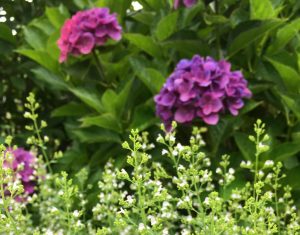
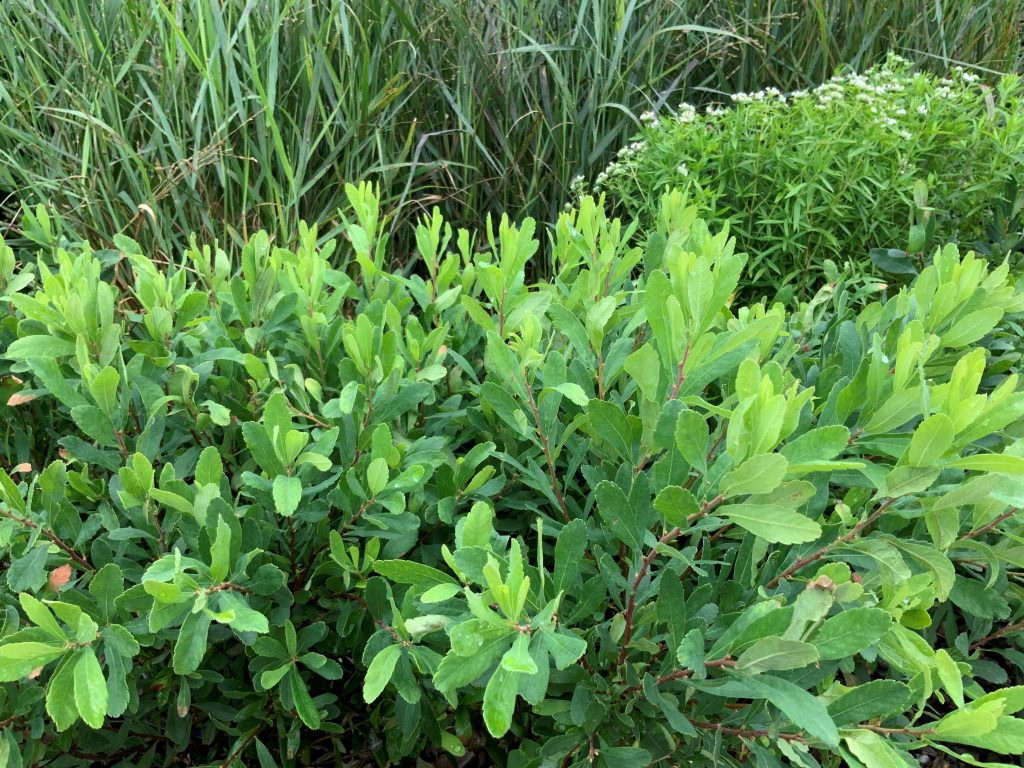
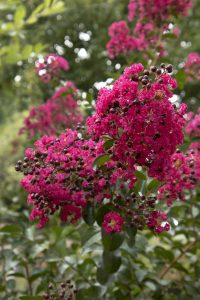 Everyone loves flowering trees. When in bloom, they can change the entire look and feel of the landscape, especially if there are many trees planted throughout a property. Ornamental cherries and pears make up the vast majority of the flowering trees that we sell at the nursery, but there are lots of lesser-used trees that are also very beautiful. In recent years, we have had more and more customers including Crape Myrtles in their gardens.
Everyone loves flowering trees. When in bloom, they can change the entire look and feel of the landscape, especially if there are many trees planted throughout a property. Ornamental cherries and pears make up the vast majority of the flowering trees that we sell at the nursery, but there are lots of lesser-used trees that are also very beautiful. In recent years, we have had more and more customers including Crape Myrtles in their gardens.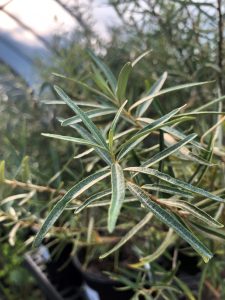
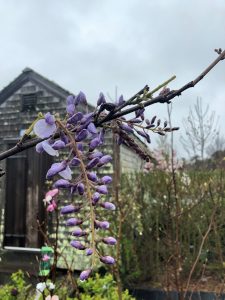 I’ve spent many, many hours on ladders and on top of roofs and pergolas as a professional gardener on Nantucket. The bulk of those hours have been spent on rose care, but pruning and training wisteria is actually one of my all-time favorite garden tasks. This graceful, spring-flowering vine requires a lot of work to keep in bounds and looking its best. This is especially true of the Asian varieties, which are quite a bit more rampant than their North American cousins. Although there are many cultivars and hybrids, Asian wisteria can generally be separated into to groups: Japanese and Chinese.
I’ve spent many, many hours on ladders and on top of roofs and pergolas as a professional gardener on Nantucket. The bulk of those hours have been spent on rose care, but pruning and training wisteria is actually one of my all-time favorite garden tasks. This graceful, spring-flowering vine requires a lot of work to keep in bounds and looking its best. This is especially true of the Asian varieties, which are quite a bit more rampant than their North American cousins. Although there are many cultivars and hybrids, Asian wisteria can generally be separated into to groups: Japanese and Chinese.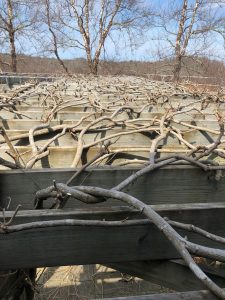

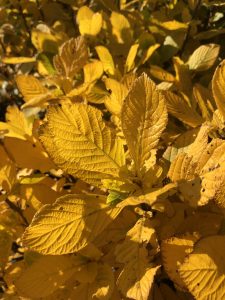 Clethra alnifolia, as botanists refer to it, is a native North American plant that is endemic to Nantucket where it can be found growing in low-lying areas and at the edges of wetlands. If grown in moist soil, it tends to sucker and form colonies over time. However, this plant is well-behaved and very adaptable, doing well in most any island garden where average soil and even water is available. It prefers full sun, but will flower in shade. The overall look of these plants is a pleasant green, twiggy shrub with an upright, balloon-shaped habit. They have medium green, rounded, ovate leaves with finely-toothed edges. In mid summer, they produce loads of fragrant flowers that are reminiscent of small, skinny bottle brushes. The native form of this plant generally has white flowers, but there are pink cultivars available, as well. Beneficial insects like it just as much as we do; many species of butterflies, bees, wasps, flies and other flying insects frequent the plant while it is in flower during July and August.
Clethra alnifolia, as botanists refer to it, is a native North American plant that is endemic to Nantucket where it can be found growing in low-lying areas and at the edges of wetlands. If grown in moist soil, it tends to sucker and form colonies over time. However, this plant is well-behaved and very adaptable, doing well in most any island garden where average soil and even water is available. It prefers full sun, but will flower in shade. The overall look of these plants is a pleasant green, twiggy shrub with an upright, balloon-shaped habit. They have medium green, rounded, ovate leaves with finely-toothed edges. In mid summer, they produce loads of fragrant flowers that are reminiscent of small, skinny bottle brushes. The native form of this plant generally has white flowers, but there are pink cultivars available, as well. Beneficial insects like it just as much as we do; many species of butterflies, bees, wasps, flies and other flying insects frequent the plant while it is in flower during July and August.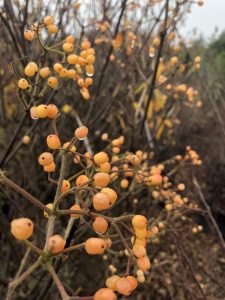
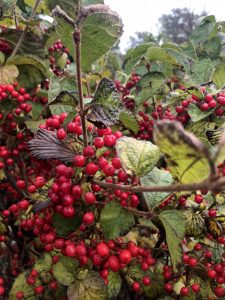
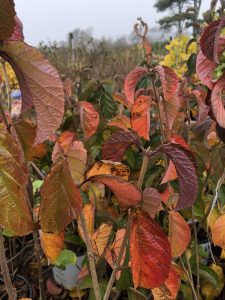
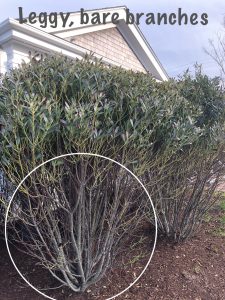
 On off years, when plants are not sheared, follow these guidelines:
On off years, when plants are not sheared, follow these guidelines: